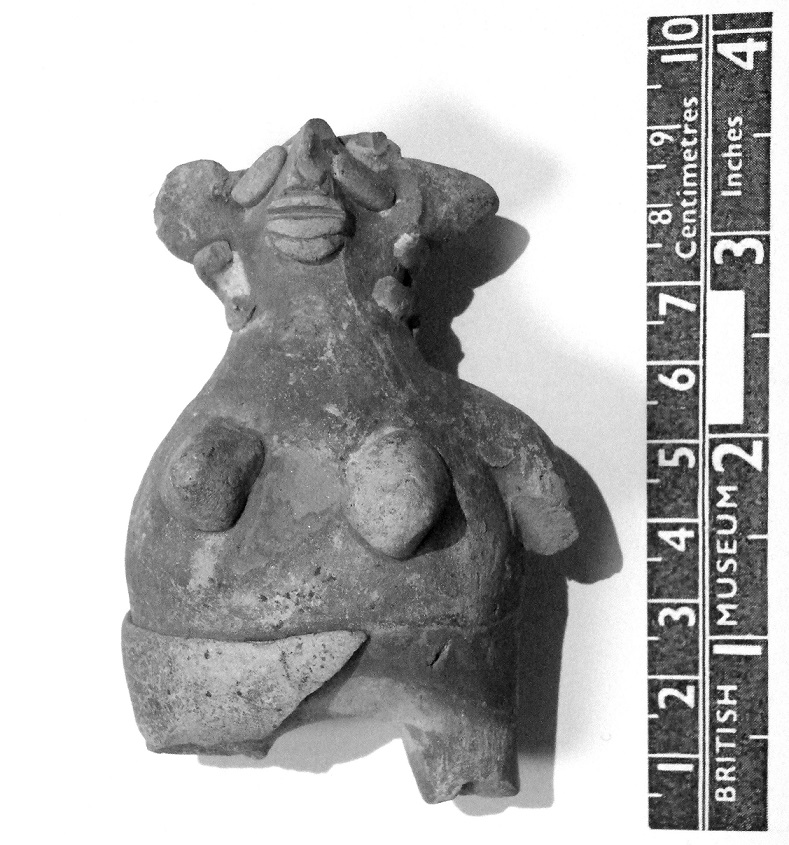
Fragmentary terracotta figure of a female (perhaps a pregnant woman), from the Indus Valley Civilization of Pakistan, c. 2500 – 2000 BCE. British Museum.
Have you ever seen a Venus figurine? They’re some of the most famous figurines in prehistory – and they are strikingly similar to this figurine, which was crafted thousands of years after the Venuses.
Standing at just over three inches tall, this figurine is made of red slipware terracotta and depicts a woman with a partial face, breasts, and wide hips. Its maker was part of the Harappan culture, also known as the Indus Valley Civilization, which thrived from 3300 to 1300 BCE. The Harappans made several of these figurines, depicting women, bulls, birds, dogs, monkeys, rams, and other human forms.
By the time this figurine was made, around 2500 to 2000 BCE, the Harappans lived in large cities – over 1,052 of which have been discovered by archaeologists. These cities were highly planned and efficiently run, featuring the world’s first urban sanitation systems and examples of hydraulic engineering. The Harappans built dockyards, granaries, warehouses, and protective walls. Yet strangely, none of their cities featured palaces or temples. Instead, it’s believed that the Harappans were traders and artisans, and the artist of this figurine dwelled in a city in modern-day Pakistan.
Archaeologists typically state that figurines like this one represent a Mother Goddess because of the exaggerated female features. Yet we know very little about Harappan religion, so there’s nothing to support this view. Instead, what we do know suggests that this figurine was the first-ever “selfie” in art. In the video below, Curator Jill Cook of the British Museum explains how the Venus figures and others like this one may have been self-portraits of their makers:
I love that these could be the first-ever selfies. Given that the Harappans were a very egalitarian society – one in which gender equality may have existed – it’s very possible that we’re looking at a real woman and how she saw herself. When we combine this figurine with the Venuses, we can see that these selfies evolved over time. Early terracotta figures were simplistic, while later ones – like this one from Pakistan – became more ornamented and detailed. By the end of Harappan culture, female figurines were distinctly adorned.
Did this mean that women had increased in status, or just artistry? Or are archaeologists right in assuming that these figures only depict a Mother Goddess? Either way, women held a distinctive place in Harappan society and may have wielded great power. We won’t know until we excavate more – and decipher their mysterious writing system.
– Tiffany Rhoades
Program Developer
Girl Museum, Inc.
This post is part of our 52 Objects in the History of Girlhood exhibition. Each week during 2017, we explore a historical object and its relation to girls history. Stay tuned to discover the incredible history of girls, and be sure to visit the complete exhibition to discover the integral role girls have played since the dawn of time.
For more on the Harappans, including more pictures of figurines and essays by scholars, visit Harappa.com.
